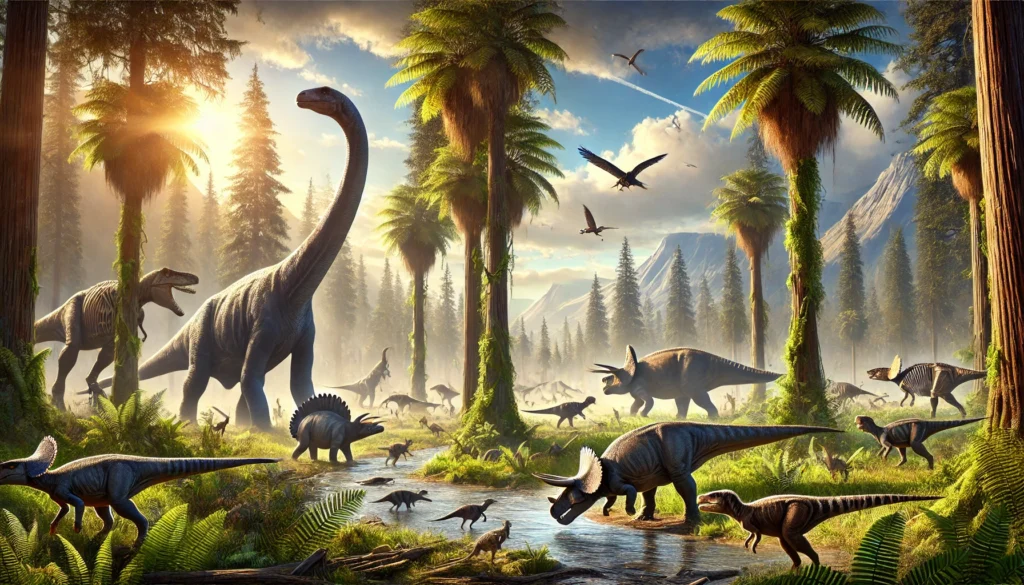
Dinosaurs: Fascinating Giants of the Past
Dinosaurs have long captured our imaginations as incredible, mysterious creatures that roamed the Earth millions of years ago. They dominated the planet for over 160 million years, and while they are now extinct, their legacy lives on through fossils, scientific research, and our cultural fascination. Here are some amazing facts about dinosaurs that might surprise you!
—
1. Dinosaurs Lived for an Astonishingly Long Time
Dinosaurs appeared around 230 million years ago, in the Triassic Period, and thrived until 65 million years ago when most of them went extinct at the end of the Cretaceous Period. This long period allowed for a vast diversity of dinosaur species, ranging from the size of a chicken to creatures as large as a modern-day whale.
2. There Were More Than 700 Different Dinosaur Species
Paleontologists have identified over 700 species of dinosaurs, with new discoveries still being made. These species varied widely in shape, size, diet, and behavior. The more commonly known ones include the massive herbivorous sauropods, like the Brachiosaurus, and the fearsome carnivores like the Tyrannosaurus rex.
3. Dinosaurs Were Closely Related to Birds
Although they look quite different, many scientists believe that modern birds are direct descendants of theropod dinosaurs, a group that includes the T. rex. Traits such as hollow bones, feathers, and certain respiratory features connect birds and certain dinosaurs, suggesting an evolutionary link.
4. Some Dinosaurs Were Massive, but Others Were Tiny
While many dinosaurs were enormous, some were quite small. The Compsognathus, for instance, was about the size of a chicken, weighing only about 3 kg (6.6 pounds). On the other hand, the Argentinosaurus could reach lengths of over 100 feet and weigh up to 100 tons!
5. Not All Dinosaurs Lived at the Same Time
Often, we imagine dinosaurs as a big, happy family living side by side. However, some dinosaurs were separated by tens of millions of years. For example, the Stegosaurus lived around 150 million years ago, while the T. rex appeared much later, about 67 million years ago.
6. Dinosaurs Were Very Social Animals
Fossil evidence suggests that some dinosaurs, like the Hadrosaurus and certain ceratopsians, lived and traveled in herds. Some even had nesting sites, where adults likely protected the eggs and young dinosaurs, showcasing a form of social structure.
7. They Had Unique Defenses and Weapons
Dinosaurs developed various methods of protection. Herbivores like the Triceratops had large horns and a sturdy frill to defend against predators, while the Ankylosaurus had a clubbed tail capable of delivering strong blows. The Stegosaurus had plates along its back and a spiked tail, making it difficult for predators to attack.
8. Many Dinosaurs Had Feathers
While Hollywood often depicts dinosaurs with scaly skin, fossil evidence shows that many theropods, and possibly other dinosaurs, had feathers. This adaptation might have helped with thermoregulation, mating displays, or even gliding before the evolution of flight.
9. Dinosaurs Could Run Really Fast
Some dinosaurs were incredibly fast runners. The Velociraptor, for example, could reach speeds up to 40 mph. Larger dinosaurs like the T. rex were slower, but still could sprint up to around 20 mph in short bursts, fast enough to chase down many animals of its time.
10. The Real Reason Dinosaurs Went Extinct Is Still Debated
While an asteroid impact 65 million years ago is widely accepted as the primary cause of dinosaur extinction, other factors such as volcanic eruptions, climate changes, and a decline in dinosaur populations over time may have also played a role. This mass extinction allowed mammals to rise to dominance, eventually leading to humans.
—
Conclusion: Dinosaurs are a window into Earth’s ancient past, revealing insights into evolution, adaptation, and the resilience of life. Though they are gone, they continue to inspire and educate us about the world as it was millions of years ago. With ongoing discoveries, the story of dinosaurs is far from complete, and who knows what fascinating facts lie yet to be uncovered?